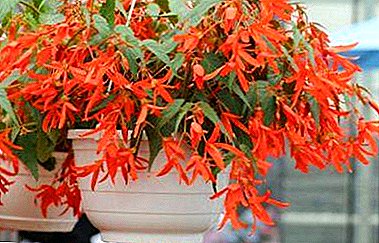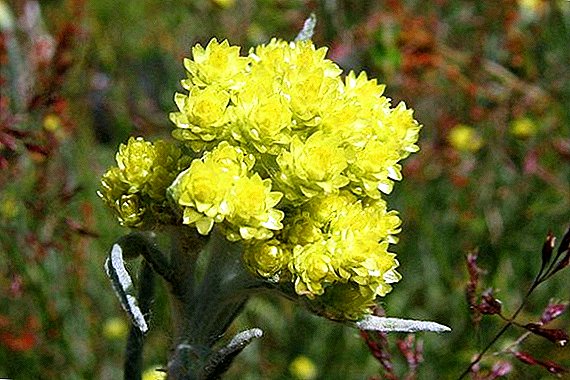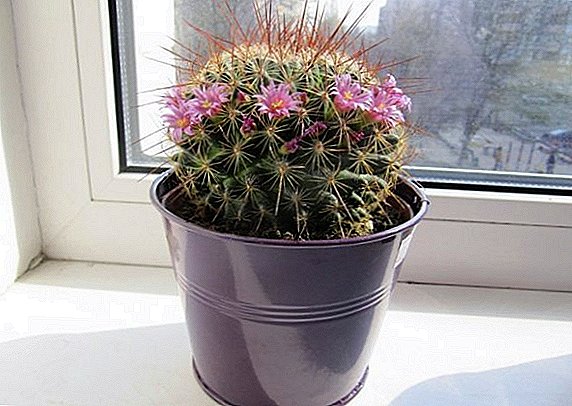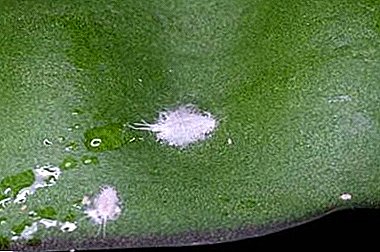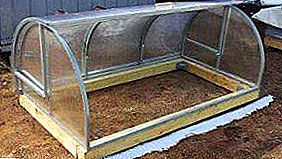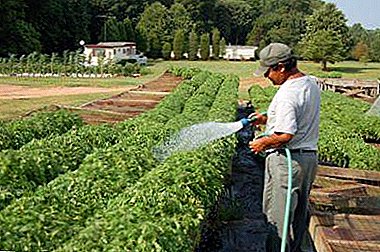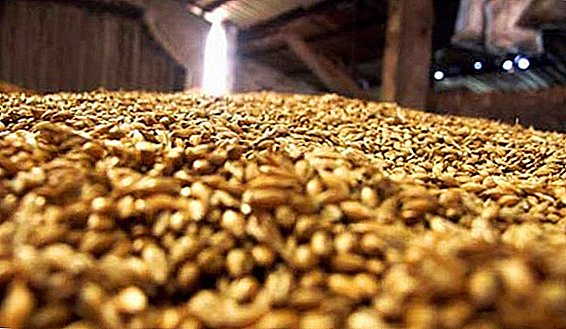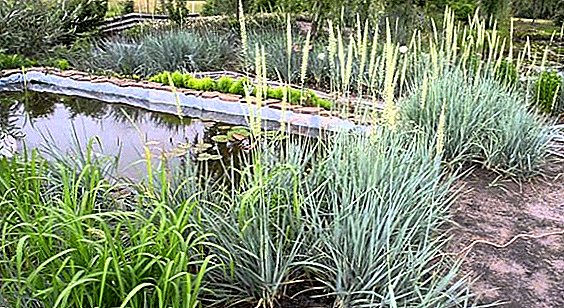 In an effort to decorate the site, many people pay attention to the ordinary-looking plants. This choice is also approved by landscape designers, who do not advise taking exotic species with “flashy” coloring. Although it is sometimes difficult to figure out simpler saplings, they are offered a huge amount. To bring some clarity to this question, find out what it is. decorative sedge, what varieties will be best in the country.
In an effort to decorate the site, many people pay attention to the ordinary-looking plants. This choice is also approved by landscape designers, who do not advise taking exotic species with “flashy” coloring. Although it is sometimes difficult to figure out simpler saplings, they are offered a huge amount. To bring some clarity to this question, find out what it is. decorative sedge, what varieties will be best in the country.
Varieties of decorative sedge
If you thoroughly examine the catalogs of nurseries, then you can count about 150 different varieties of this plant. They can be divided into two groups: tall and short. For the garden decor are used successfully "representatives" of both types.
Among undersized The lines most popular are:
- Beatles (in directories it is listed as Hybrida The Beatles). One of the most spectacular species is rather long (up to 15 cm) narrow leaves collected in a dense rounded hummock with a circumference of 30 - 40 cm. The sheets retain their color after winter.
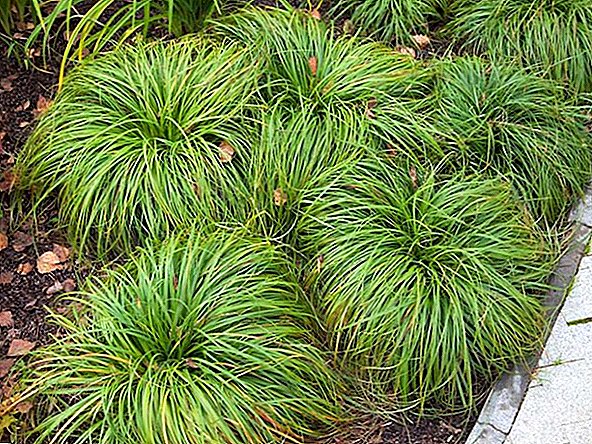
- Conica. It grows up to a maximum of 15 cm, is characterized by a saturated green color of leaves. It quickly grows, without requiring careful care.
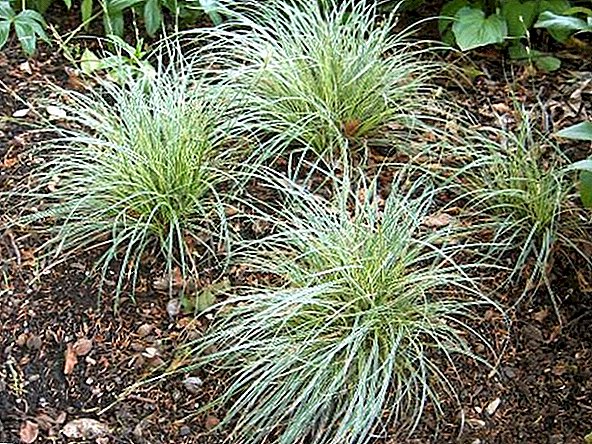
Important! Sedge is suitable for decoration gazebos or verandas - several plants planted in a pot will change their decoration. With this use, perennials need to be protected from heavy rain and sudden gusts of wind.
- Firma variegata in the form of plump hummocks up to 10 cm high. It is accepted everywhere - both in the shade and in the sun. Depending on this, it changes color: from pale yellow to dark green.

- The same goes for a higher grade. Flacca. At 13–15 cm in height, it is distinguished by its color - instead of the traditional green color, the leaves are “poured” in a bluish tone, which looks great against the background of the pond.
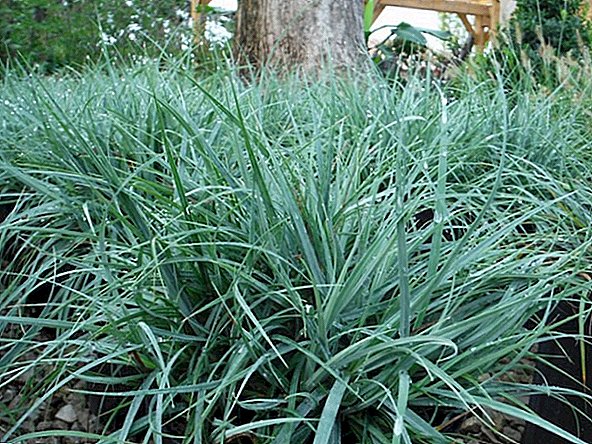
- It is considered even more decorative Morrowil with a differently colored paper design (a white stripe is clearly visible on the very edge). It looks like a thick "cap" with a diameter of 25-35 cm and a height of 17-20.
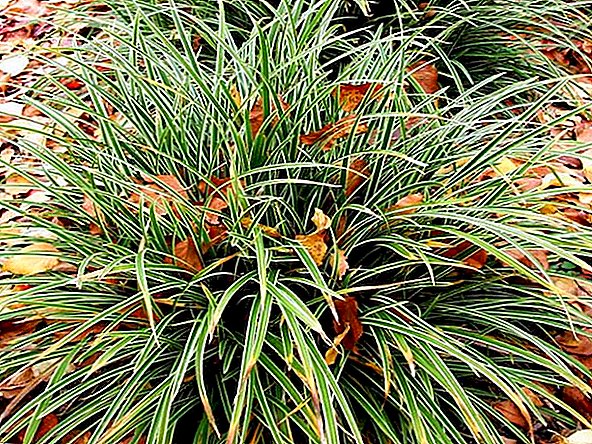
- Buchananii with beautiful brown-yellow (almost copper) leaves. The bush itself easily grows to 70-75 cm, and the presence of nearby water will only emphasize its appearance.
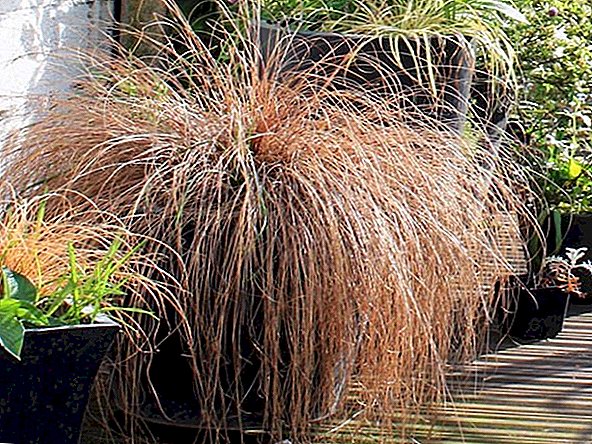
- His thermophilic "brother" called Buchananii viridis different green leaves with fawn "notes" in color. Such bushes are usually bought by pros - a heat-loving variety needs light shelter, while wintering on open ground can destroy it.
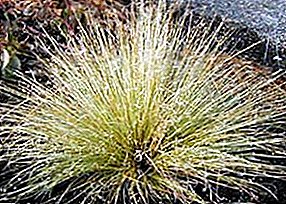
- Thin-leaved Comans slightly lower (55-60 cm), but its leaves, resembling hair, form beautiful grassy "twists". Does not need warming.
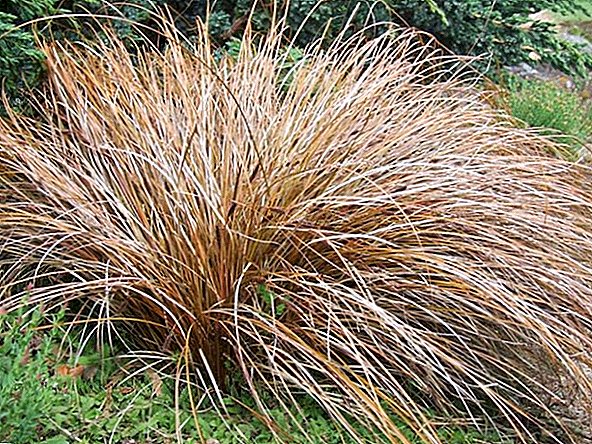
Did you know? Landscape design in its current form appeared only in the twentieth century. Before that, people also decorated their plots and gardens, but only 50-60 years ago this hobby received a powerful impetus to development - the citizens wanted to be closer to nature "without separation" from the house or cottage.
- The real decoration will be Elata. In terms of dimensions, it is close to the variety just described, but beats it at the expense of purely decorative colors: the leaves can be either yellow or green, and the golden yellow is considered the most spectacular. True, not everyone can buy such beauty at all - the variety is considered exot.
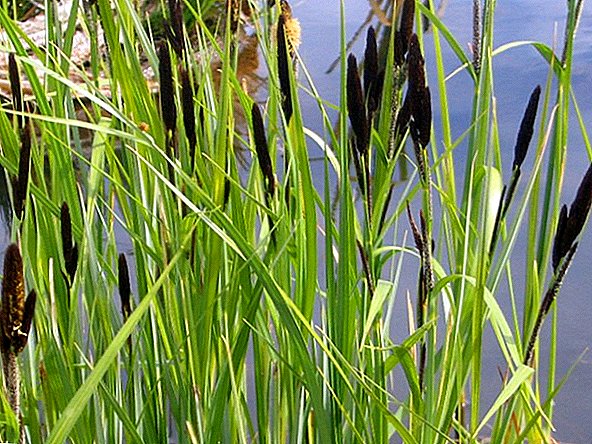
- "Tall" Pendula meter height is great for the coastal zone. Her drooping ears look simple and create a feeling of complete oneness with nature.
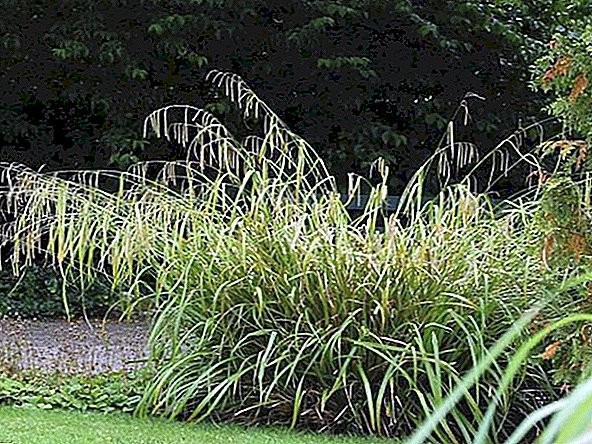
In addition to sedge varieties Buchananii Viridis, heat-loving plants also include: syngonium, young, streptocarpus, strelitzia, stefanotis, stapelia, spathiphyllum, selaginella, scandapsus and sheflera.Orienting in varieties, do not forget about the species classification. The fact is that the selected sedge can belong to one of four directions - arctic or marsh, lowland or mountain. On this depends both the nature of growth and the size of the plant itself. It is desirable to clarify this point before the purchase.
Application in landscape design
A noticeable, and at the same time “decorative” in appearance, decorative sedge is actively used in landscape design.
Of course, the main sphere of its application is registration of reservoirs. The plant is readily accepted on the shores, and the slightly lowered tops of high varieties only emphasize the natural appearance of the lake or canal - at such moments it seems that nature "thought."
Important! The appearance of small, but frequent yellow spots on the sheet - a signal to stop feeding.Landing along the path leading to the pond will also be an excellent option.
 But the sedge is not limited to the “water procedures” alone - many varieties take root on the more arid “patches”. In the open cottage or in the garden perennial can be used for such purposes:
But the sedge is not limited to the “water procedures” alone - many varieties take root on the more arid “patches”. In the open cottage or in the garden perennial can be used for such purposes:- Alpine slide design. Particularly impressive in this regard look stunted ground cover lines, carpeted soil between the stones. For a better effect, you can land a couple of higher sedges closer to the center or along the edges of the composition.
- Planning a large area rockery. Here the location may be angular, so as not to obscure the smaller species, planted next door.
- Decorative sedge is ideal for decorating shady areas of the garden. Most often, near the trees planted undersized varieties that visually complement their foliage with its greenery.
- Evergreen lines are suitable for joint planting with primroses. This gives the impression of constant growth. The only thing - the sedges should not suppress the supply of light to the neighboring youngsters.


Did you know? The legendary Versailles Park covers an area of 600 hectares. It is noteworthy that at the beginning of its “career” (XVII century) the massif occupied much more - about 1,700 hectares. But then came the era of urbanization, part of the plantings died.If such a large-scale redevelopment does not have enough time, do not despair: you can plant perennial in pots or containers. Placing them in a dense group, you will also achieve a good visual effect. The main thing - do not lose with the packaging. A pot will suffice for a low bush, while tall grass, which will eventually wilt, will need a larger container.

Location selection
Selecting a site for disembarkation, you need to remember about the features of a particular grade. Marsh sedges will grow only on wet soils with the presence of peat or sand. Other lines will also be taken on a dry soil (of course, it will have to be regularly moistened).
Not bad, if the soil has been fed with peat or organic since the fall, it will be easier for the plant to get used to it.
There are also requirements for lighting. Providing a perfect light mode is far from being obtained by everyone, but that's okay - a kind of light penumbra will be a compromise. 
The same story with the wind. Arctic species are well tolerated by strong and long winds, while others need a calmer place in this regard.
When planning a landing, consider the moment that sedge roots grow very quickly, which literally can reach the rhizomes of other plants for a season. Therefore, they are trying to keep at a distance. 
Planting and breeding
To land a sedge in open ground is very simple - anyone can handle it. The course of work will be as follows:
- In the heated soil made small grooves. Their depth may differ depending on the size of the planting material - 3 cm is enough for seeds, and for seedlings they are taken deeper, with a reserve for the growth of rhizomes.
Important! Clay pots are suitable as a container - plastic may be too toxic for young shoots.
- Lightly moistened in the wells, you can fill them with a thin (0.7-1 cm) layer of sand or peat.
- After that, seedlings or seeds are placed in a groove and sprinkled with earth, not forgetting to compact and moisten it tightly.
 The planting scheme provides for an interval between young seedlings of 25-30 cm. For older specimens, this gap widens.
The planting scheme provides for an interval between young seedlings of 25-30 cm. For older specimens, this gap widens.This procedure is carried out in late April or early May, when there is no risk of re-frost.  Some practice and pre-planting, implying propagation of seeds. Here it is more difficult:
Some practice and pre-planting, implying propagation of seeds. Here it is more difficult:
- In late February or early March, a spacious pot is taken. It is filled with a mixture of leaf and sod soil, humus, peat and fine river sand (all this is added in equal shares). So that such a substrate "breathed", add a little bit of coal.
- At the same time, seeds are placed in boiled water for 12 hours (swamp varieties will require a day). The water in these "baths" changes every 2 hours.
- After these manipulations, the seeds are spread on the soil and sprinkled with a thin (0.5-0.7 cm) layer.
- The pot itself is immediately covered with glass or film. They should not touch the ground. It is put on the battery or boiler - requires a lower heating and constant + 22 ° C.
Did you know? If you correlate the appearance of the noble estates of the early twentieth century with the current "canons" of landscape design, you will find almost complete coincidence. The combination of utilitarian and ornamental species with the obligatory pond was still considered a sign of good taste.
- The substrate is kept moist, before the emergence of shoots for such purposes, a spray gun is used - "direct" pouring is prohibited so far.
- Periodically, the seeds are aired by removing the film for 1-2 hours. This will not let them rot.
- Sprouts can "beat off" in a month or two. Grown into the growth of grass necessarily dive, placing in another container. By early May, the roots will get stronger, and the transfer to the site will be successful.

A simpler breeding method is dividing a bush. This method is well known to experienced flower growers, and for beginners it will not be difficult:
- In the spring, during active growth, dig a plant with several powerful stems.
- After washing away the lump of earth from the rhizome, carefully inspect the "pad" itself - it should be healthy, without sores and rot stains.
- If the central root is healthy, it is divided into several parts with a sharp knife. Lateral growths are separated by him (although you can gently tear off his hands). It is not worth much to "chop up" the root - too small bubochki risk not to take.
- Places cuts sprinkled with charcoal in powder form. In this way, do not allow to develop rotting. Some are treated with activated carbon - it is also suitable for disinfection.
- The resulting seedlings can be taken out on the ground immediately or after a 10-day "quarantine" in separate pots. All this time the container is kept in coolness and shade, abundantly watered the substrate.

Important! Planting sedge near the path, seedlings are placed so that in the future it does not scratch passers-by with its hard stems.The first season after such a separation, the seedling will only be mastered, and the expected riot of colors is not always observed. But next year he will quickly return to normal.
As you can see, decorative sedge is relatively simple in terms of planting and growing, the same can be said about seasonal care.
Peculiarities of care
The content of sedge in the country or in the garden comes down to the usual work. But for all its simplicity, they are associated with some nuances that are worth recalling. 
Watering
Main condition - plentiful and frequent watering. It is undesirable for the soil to dry out and be taken with a crust and cracks. In the summer months, perennial moisturize 2-3 times a week. On one bush can go 10-liter bucket of water.
If you skip a couple of planned watering, the result will be visible immediately - the leaves instantly turn yellow around the edges, and growth slows down. In addition to this, the roots begin to weaken.
With specimens growing in containers, the matter is somewhat simplified - the tub is often placed directly in the water, making sure that the roots are not overwetted. 
 Separate topic - water quality. The sedge is extremely sensitive to it: too hard, chloride or technical fluid (which is often served at the dacha) can ruin the root. In such a situation it is better to use separated water. For a week, harmful compounds will settle at the bottom of the barrel, water can be used.
Separate topic - water quality. The sedge is extremely sensitive to it: too hard, chloride or technical fluid (which is often served at the dacha) can ruin the root. In such a situation it is better to use separated water. For a week, harmful compounds will settle at the bottom of the barrel, water can be used.
Did you know? The fashion for decorative mini-gardens came to us from Japan. From the same "migrated" and many plants.Distilled and melted water are also suitable. Boiled is also nothing, but for a large array of plants it is quite a costly option.
Top dressing
It is carried out every 2-3 weeks, simultaneously with watering.
Usually they make organic compounds like bird droppings or rotted manure. The use of "mineral water" also give a good effect.  But such funds should be complex - for example, a preponderance towards nitrogen will only affect the green mass, while the rhizome will remain without an “additive”.
But such funds should be complex - for example, a preponderance towards nitrogen will only affect the green mass, while the rhizome will remain without an “additive”.
The best choice would be "Nitroammofosk" or balanced "Ammophos". The application rates are indicated on the package, but it also doesn’t hurt to consult with the seller - for different types of soil it is prescribed “its own” dosage, which is better specified.
The peak of application is in spring and summer. Since the beginning of autumn fertilizers are not applied. 
Pruning
Dried leaves cleaned in spring (for evergreen species this is a must).
Shrubs can be formed by removing too bulging stems with sharp scissors or a knife. Such work requires a certain skill - movements must be sharp, without causing multiple cuts.
Important! Secateurs with anvils (support) practically do not damage the cut, deforming only the remote part of the branch. They are used for strong shrubs.Of course, it will be necessary to prune diseased branches, which may become a focus of the disease or attract pests - sanitary pruning reduces the likelihood of their occurrence.

Wintering
Most varieties we grow different enviable winter hardiness - Often they do not even cover.
Lilac, spirea, white deren, barberry, mountain ash (red), viburnum and wild cherry, as well as decorative sedge, winter-resistant plants that can tolerate a frosty period for a long time.But for the best preservation of the root, it is advisable to lay out a layer of mulch - it will become a reliable protection in the cold and little snowy winter. The lapnik from coniferous branches will be the excellent choice. Straw will also come down, although pests can winter there.

More "capricious" on this background look like varieties Buchananii viridis - they must be wrapped in anticipation of cold weather (or even completely transferred to the greenhouse, where the temperature does not fall below + 8 ° C). This is typical of all exotic animals imported from warm countries.
We learned what a remarkable sedge is, we found out what kind of plant it is, what is the reason for its cultivation. Hopefully she will worthy decoration your site. New colors every day!












